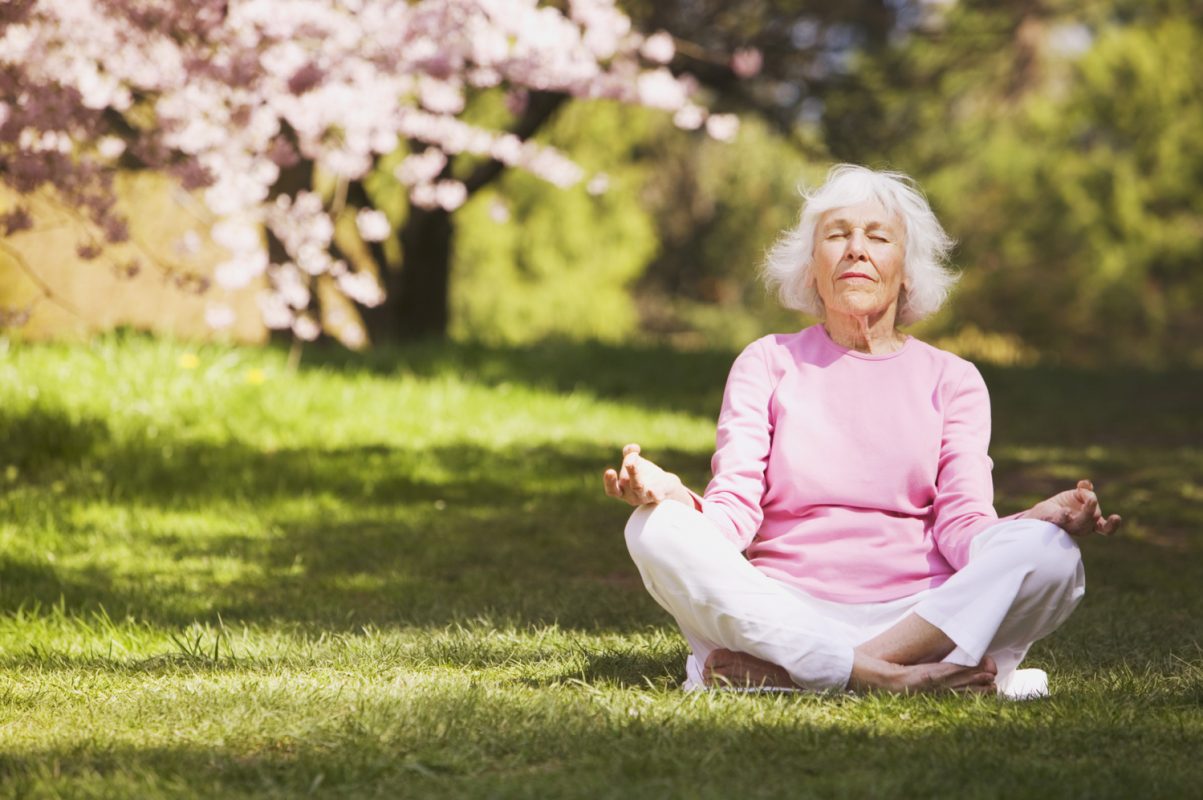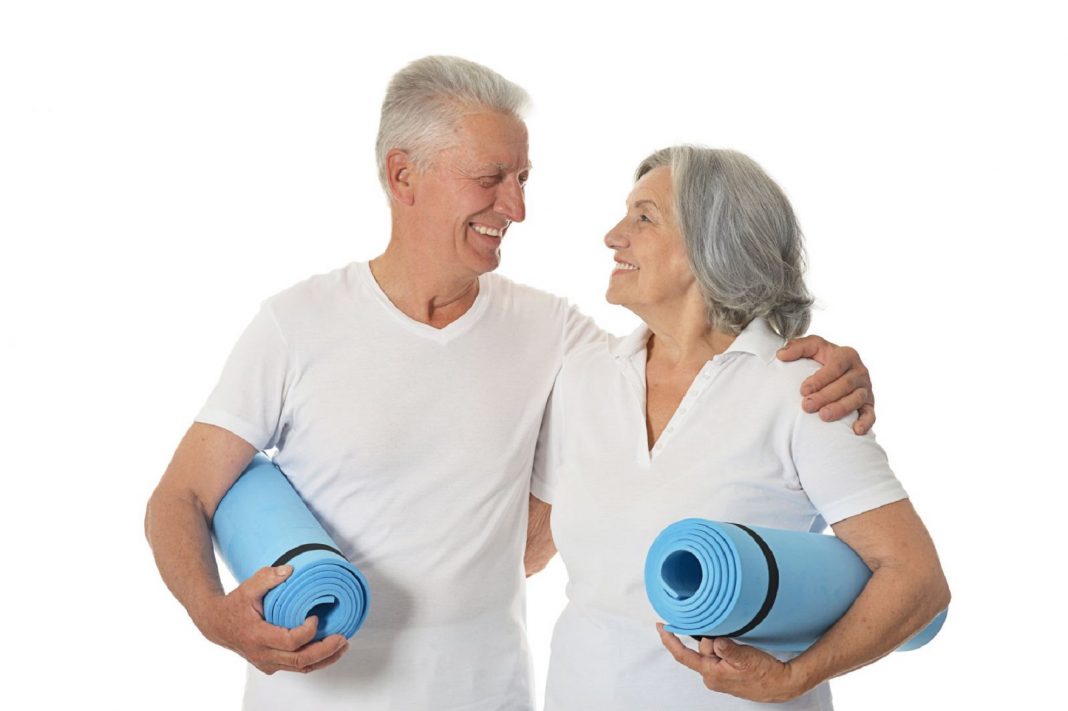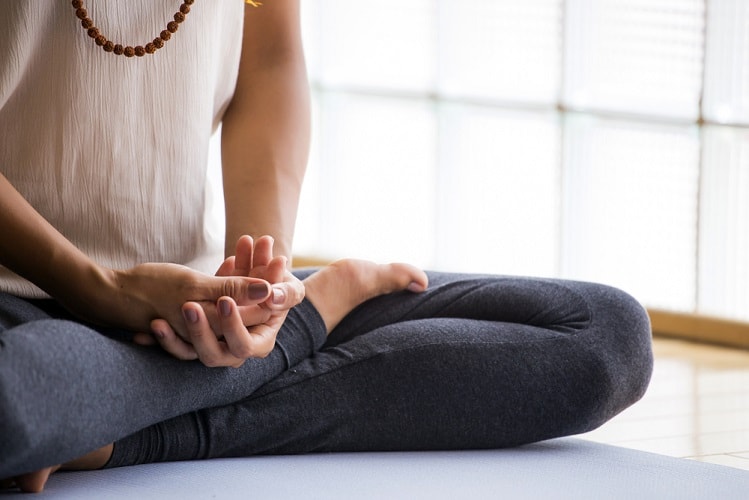
The therapeutic benefits of yoga can play a key part in the lives of those managing disease. Not only is it beneficial for patients, but also for their caregivers, who support them through the physical and mental demands of living with illness. Even more powerful, though, is for patients and their caregivers to practice yoga together. The shared experience of yoga helps caregivers and patients take care of their own wellbeing, connect with each other, and improve the quality of their lives.
Why is Yoga Important for Caregivers?

Caregiving can be time-consuming, overwhelming, and stressful, and caregivers have been shown to exhibit higher rates of depression, heart disease, and other ailments because of this. In order to combat or prevent these ailments, caregivers need a sustainable way of looking after themselves as well as their patients.
The more the caregiver is feeling fully resourced themselves, the more of an overflow of energy they have to share with their patient. Unfortunately, for many caregivers, it is difficult to find solo time to spend recharging. So while yoga is well-known to be beneficial for caregivers, it is not always feasible for them to get to a class because of their responsibilities as a caregiver.
Patients and Caregivers Can Do Yoga Together

A recent study at the University of Texas MD Anderson Cancer Center concluded that partner-based yoga improves quality of life for caregivers and patients. Study participants were patients with high-grade glioma and their caregivers who partook in about 2-3 yoga classes per week—up to 12 yoga sessions total. Researchers observed symptoms and quality of life according to participant self-assessments.
The author of the study, Kathrin Milbury, Ph.D., said that caregivers can be vulnerable to similar symptoms as their patients, such as fatigue, sleep disturbances, and distress. She was interested in exploring a supportive care intervention to help patients and caregivers to cope together through dealing with cancer.
The results of the study were positive overall, with the majority of participants concluding that the yoga was “very useful”. The symptoms of both patients and caregivers were improved.
Maryland-based Registered nurse Cathy Rees came up with a similar solution, offering classes for patients and their caregivers so that both can reap the benefits of yoga. Her experience teaching yoga at local centers that provide senior care Brooklyn inspired her to develop “Care Partner Yoga,” an extra gentle seated class specifically tailored to help patients and their caregivers gently stretch, reduce stress, and improve overall well-being. Her class is offered free of charge at Columbia Yoga.
Another resource for patients and caregivers who want to practice yoga together is Hope Connections for Cancer Support, a non-profit organization based in Bethesda, Maryland. The organization offers free programs in the USA to help people manage living with cancer. The programs, which include yoga and meditation, are open to patients as well as their friends, family, and caregivers.
Partner Yoga for Patients and Caregivers

Dealing with physical or mental illness—as a patient or caregiver—can be incredibly stressful and challenging. Here are some simple exercises that caregivers and patients can do together to renew, find calm, and relieve stress. These exercises can be done at any point in the day and don’t require much of a time commitment:
- Focus on the breath: Place one hand on the belly and one hand on the heart space. If this isn’t possible, let the arms rest wherever is comfortable. Simply feel the breath flowing in and out. Notice the subtle movements that the breath creates between the belly and the chest.
- Expand and fold: Sitting on two chairs near to each other, inhale to raise the arms up above the head. Exhale to fold forward as far as is comfortable, letting the arms come down towards the legs/feet. Repeat 5 times.
- Guided meditation: Practice a guided savasana, full body relaxation, or meditation together. Find one you like on our meditation basics page or by searching on YouTube.

Simply taking a moment to pause and breathe can help to calm the nervous system and bring the body back into its natural state of rest and relaxation. Being in recovery mode rather than in “fight or flight” mode is crucial for both those dealing with illness and pain and for their caregivers as it allows the body and mind to re-focus on what’s important: healing.
Originally Published: yogabasics.com

















